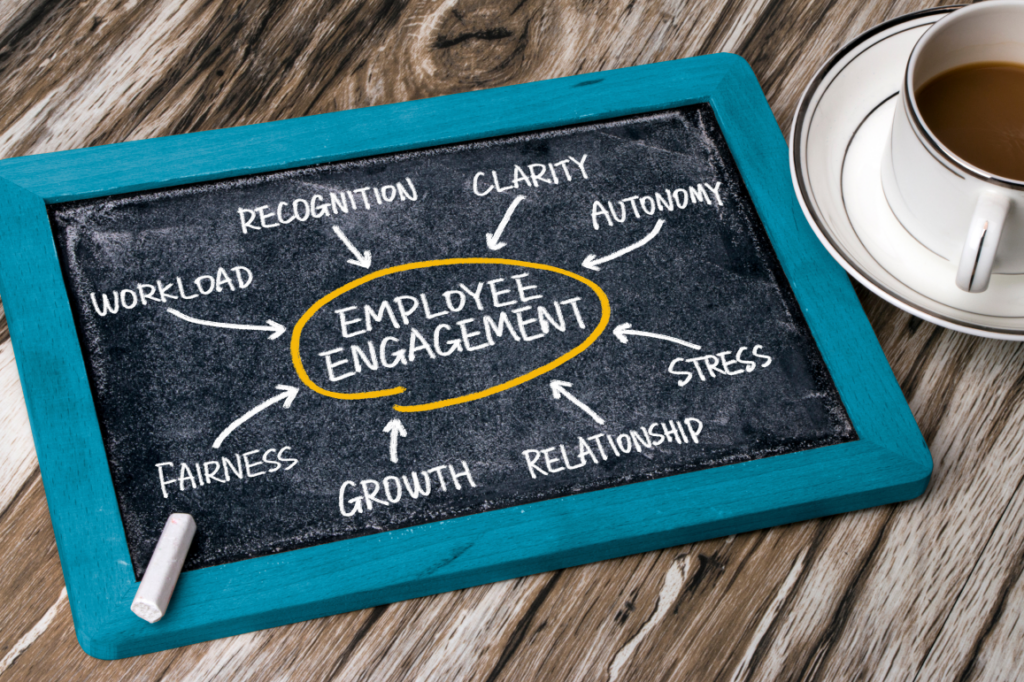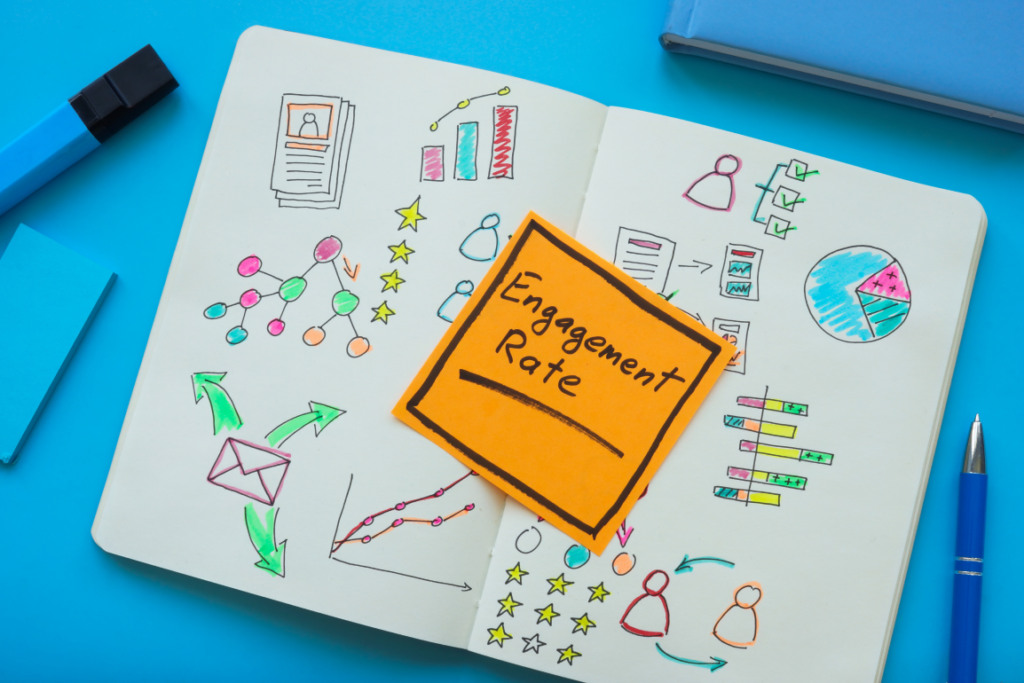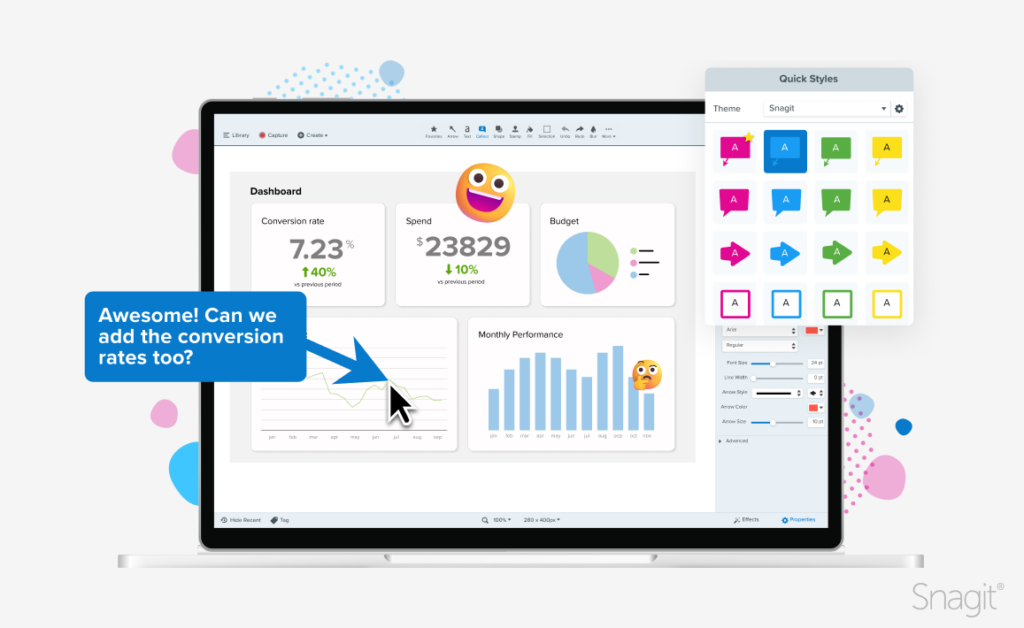Imagine a workplace where employees are motivated, enthusiastic, and aligned with the company’s goals. This type of workforce is essential to fostering a positive work environment, increasing productivity, and achieving better business outcomes.
In today’s competitive market, the level of employee engagement can make or break your business. Workforce engagement is more than just keeping employees happy. It’s about building a high-performing, loyal team committed to your company’s vision.
This guide will take you through everything you need to know about employee engagement. We will:
- Cover the fundamentals of employee engagement
- Explore actionable strategies
- Show how tools like Snagit can streamline communication, especially in remote work settings.
What is employee engagement?

One measure of employee engagement is employees’ commitment and enthusiasm toward their jobs. An engaged employee is satisfied with their job and passionate about contributing to the company’s success. These employees are motivated, proactive, and take ownership of their roles.
Impact on business outcomes
Engaged employees don’t just clock in and out—they drive actual, tangible business outcomes. Improved productivity and higher customer satisfaction levels can significantly impact the company’s bottom line. Companies that measure employee engagement often experience the following:
- Increased productivity: Engaged employees are more efficient and often exceed employee performance expectations. Gallup’s meta-analysis research shows that companies with more engaged employees experienced a 21% boost in productivity.
- Lower turnover: Engaged employees are less likely to seek other employment, reducing recruitment and training costs.
- Better customer experiences: Employees who care about their roles frequently deliver exceptional service, which improves customer satisfaction.
Why employee engagement matters
Boosts job satisfaction

When employees feel valued, heard, and connected to their company’s goals, job satisfaction improves. Happy employees are less stressed, more motivated, and more likely to go above and beyond in their roles. Employee satisfaction is also pivotal in reducing absenteeism, burnout, and employee turnover.
Strengthens Company Culture

A company culture built around engagement creates a more positive, cohesive work environment. Helping employees feel a part of something larger than themselves can help employees collaborate, innovate, and contribute positively to the organization.
Showing how an employee’s work is related to your organization’s mission is significant too. “A purposeful mission is not sufficient to establish feelings of value alignment. Employees have to see a connection between their day-to-day work and the organization’s greater purpose,” states Harvard Business Review.
Improves business performance

Engaged employees are more productive, and their commitment positively impacts a company’s profitability. Higher engagement levels can lead to increased sales, better customer retention, and even innovation in products and services.
Common signs of employee disengagement
Recognizing the signs of disengagement early can prevent larger organizational issues down the road. Culture Amp warns us of a growing trend called “Quiet Quitting”. “Rather than quitting in a literal sense, they (employees) quit the practice of going above and beyond.” Some common indicators include:
- Lack of Initiative: Disengaged employees avoid taking on new challenges and resist ownership of their tasks.
- Decreased Productivity: A lack of motivation often results in poor performance and lower output.
- Poor Communication: A disengaged employee may limit interactions with colleagues, avoid team discussions, or contribute minimally in meetings.
- Resistance to Feedback: Employees who are disengaged or seem indifferent to efforts aimed at improving their performance or growth.
- Withdrawal from Team Activities: Avoiding team-building activities, social events, or collaborative efforts may be signs of disengagement.
Top employee engagement strategies to implement
Strategy 1: Encourage open communication
One of the most effective ways to improve employee engagement is by fostering open, transparent communication. Employees need to feel comfortable sharing their ideas and feedback. By creating a culture where dialogue is encouraged, employees are more likely to feel heard and valued.
Tools like Snagit can play a crucial role in enhancing communication, especially in a remote or hybrid work environment. Visual aids like screenshots and screen recordings make it easier for employees to share ideas and collaborate.

Strategy 2: Provide opportunities for growth
Employees are more engaged when they see a clear path for their own growth and development. Offering career development plans, mentorship opportunities, and training programs can significantly boost engagement. Support these opportunities with visual learning. Create video tutorials or training guides with Snagit, making information more accessible and engaging.
Strategy 3: Recognize and reward achievements
Regularly acknowledging and rewarding employee contributions is key to maintaining elevated levels of engagement. Whether through public recognition, bonuses, or informal thank-yous, recognition makes employees feel appreciated. One thing to consider, however, is that individuals may like to be recognized differently. Consider implementing an employee recognition program that consistently highlights accomplishments and contributions to the company’s success in various ways.
Strategy 4: Promote work-life balance
A work-life balance is no longer a perk; it’s an expectation. Employees who have the flexibility to manage their personal and professional lives are generally more engaged and satisfied. Whether it’s offering flexible working hours or remote work options, companies should prioritize employee well-being. By promoting a healthy work-life balance, you can directly improve job satisfaction and engagement.
Strategy 5: Foster collaboration and teamwork
Collaboration is crucial for fostering workforce engagement. When employees work together toward a common goal, it not only improves team dynamics but also increases job satisfaction. Use Snagit to capture and share ideas visually, making teamwork more interactive and efficient. Encourage team-building activities and cross-departmental projects to create a stronger sense of unity.
Creating an employee engagement action plan

A well-thought-out engagement plan is the cornerstone of improving employee engagement. Here is how you can create one:
Step 1: Set clear engagement goals
Define what success looks like for your company. Are you aiming for higher job satisfaction, better productivity, or lower turnover? Clear objectives will help you measure your progress and stay on track.
Step 2: Conduct employee engagement surveys
To gauge current engagement levels, conduct regular pulse surveys. These surveys should measure employees’ feelings about their roles, the company culture, and management. Tools like SurveyMonkey or Google Forms can streamline this process. Use Snagit to create visuals, graphs, and reports from survey results, making the data easier to action for future development opportunities.
Step 3: Develop tailored solutions
Use the survey results to tailor strategies specific to your company’s needs. The first step is to thoroughly analyze the data to identify trends, strengths, and areas needing improvement. Next, look at specific groups like departments, locations, or employee levels. Here you can uncover more nuanced insights and avoid implementing broad, generic solutions.
Once key issues are identified, prioritize them based on their impact and urgency. Prioritize improvements that will lead to the greatest engagement gains, such as addressing concerns about recognition or the work environment.
Step 4: Implement and monitor
After identifying priorities, work closely with relevant stakeholders—such as department heads and HR teams—to develop actionable, targeted solutions. Collaboration ensures that any proposed changes are aligned with organizational goals and the specific needs of each team.
Communicate the findings and the proposed actions to employees transparently. This helps demonstrate that their feedback is valued and acted upon. This step boosts engagement by demonstrating the company’s commitment to continuous improvement.
Once your engagement strategies are in place, continuously monitor progress. Conduct regular check-ins to ensure that strategies remain effective and adapt as needed.
The role of employee engagement surveys

Culture Amp states, “For many organizations looking to make a change, understanding what’s driving employee engagement is a helpful starting point. When you understand your employees—their motivators, emotions, feelings, and more—you put yourself in a better position to enact true change.”
Surveys are vital to understanding your employees’ needs and adjusting your strategies accordingly. They provide real-time insights and create a platform for employees to voice their concerns. Designing an effective survey involves focusing on critical areas like job satisfaction, company culture, and communication.
For example, ask questions such as, “How satisfied are you with the communication channels available in your team?” Once the data is collected, act on the feedback. Team members are more likely to engage if they see that their input leads to positive changes. Also, be sure to let them know that certain actions are a direct result of their feedback.
Tools to enhance employee engagement
Communication platforms
In today’s hybrid work environments, effective communication tools are essential for fostering collaboration and engagement. Platforms like Slack, Zoom, and Microsoft Teams facilitate open lines of communication among employees, especially in remote settings.
Snagit for visual communication

Visual aids improve clarity and help bridge communication gaps. Snagit is an excellent tool for creating screenshots, videos, and tutorials, making communication clearer and more engaging. Use it to create instructional videos or capture visual feedback to enhance workforce engagement.
Video messages > meetings
Record your screen and camera with Snagit for quick updates and feedback.
Learn More
Project management tools
Tools like Asana or Trello keep teams aligned, ensuring tasks and responsibilities are clear. These tools improve team collaboration, helping employees stay organized and focused on common goals.
Survey tools
SurveyMonkey and Culture Amp are effective platforms for conducting employee engagement surveys, gathering actionable feedback, and tracking employee satisfaction over time.
Measuring the success of your employee engagement strategies
Track key metrics
To understand the effectiveness of your employee engagement initiatives and strategies, you should track metrics like employee retention rates, productivity levels, and survey results. A drop in turnover or a rise in productivity after implementing engagement strategies indicates success.
Adjust and improve
Continuous improvement is essential. Use the data you gather to refine your strategies and make adjustments based on employee feedback.
The role of company culture in employee engagement
Company culture is more than a buzzword—it’s the essence of how a company operates. A culture that promotes engagement, values transparency, recognition, and growth. Creating an environment that prioritizes open communication, shared values, and ongoing support is essential for long-term engagement.
To create a positive work environment, focus on fostering a culture that prioritizes transparency, recognition, and continuous improvement. Engaging employees through open discussions, providing support, and promoting shared values are key to building a strong, collaborative culture that drives success.
Conclusion: Prioritize employee engagement for long-term success
Engagement is the key to building a thriving company culture, improving job satisfaction, and achieving better business outcomes. By implementing the right strategies and using tools like Snagit for enhanced communication, you can significantly increase employee engagement and create a more dynamic, productive workforce.
Ready to engage your employees more effectively? Try Snagit to improve communication and collaboration today!
Frequently Asked Questions
At least twice a year to gather continuous feedback and adapt strategies. Consider a larger survey at the same time every year and then perhaps a condensed version six months later that can circle back on the most important topics you are concerned with.
Clear Communication and Expectations, Opportunities for Growth and Development, Recognition and Reward, Work-Life Balance, Strong Leadership, Purpose and Meaning in Work, Inclusive Culture. By focusing on these drivers of employee engagement, companies can create a work environment that motivates employees to be productive, committed, and loyal.
Engaged employees are more productive, have lower turnover rates, and provide better customer service, all contributing to better overall business performance.



Share